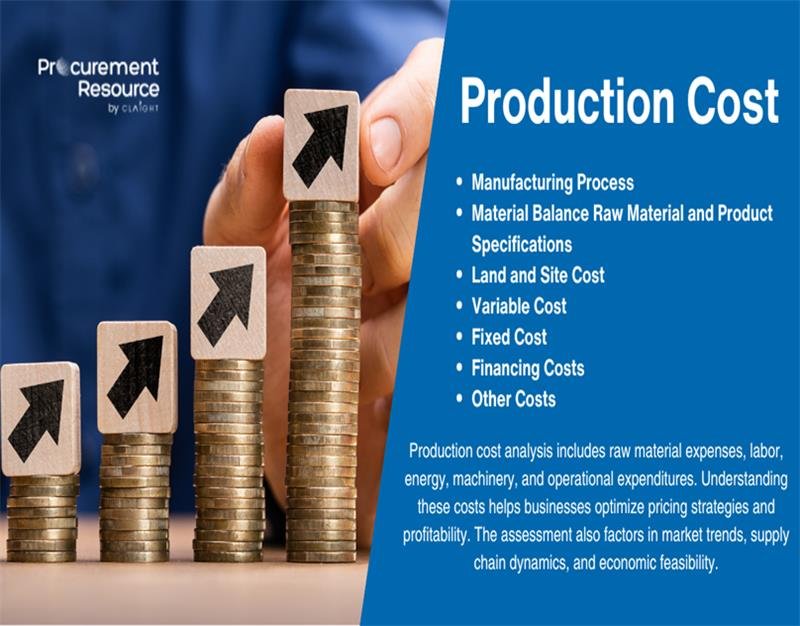The rising demand for biopharmaceuticals and chronic disease management solutions has made Recombinant Human Insulin a vital component of the healthcare sector. As the prevalence of diabetes continues to grow globally, understanding the Recombinant Human Insulin Production Cost is essential for stakeholders, including pharmaceutical manufacturers, investors, procurement professionals, and policy-makers.
This article explores a comprehensive production cost analysis report that covers every critical aspect of insulin production, including raw material sourcing, labor costs, utilities, industrial trends, and supply chain dynamics. With advanced insights from Procurement Resource, businesses can accurately evaluate cost models, assess feasibility, and strategize effectively in a competitive market.
Overview: Recombinant Human Insulin and Its Importance
Recombinant Human Insulin is produced using genetically engineered organisms such as E. coli or Saccharomyces cerevisiae through recombinant DNA technology. It is a life-saving product for millions of diabetic patients and is among the most widely used biopharmaceuticals globally.
Due to its complex production process and stringent quality regulations, insulin manufacturing involves significant investments in infrastructure, skilled labor, and compliance systems. Consequently, analyzing its production cost becomes essential for manufacturers aiming to remain competitive and cost-efficient.
Recombinant Human Insulin Production Cost Analysis Report
The Recombinant Human Insulin Production Cost Analysis Report provides detailed insights into the economic aspects of producing insulin at an industrial scale. The report encompasses:
- Pre-Feasibility Assessment: Evaluating the viability of insulin production across different geographies, plant scales, and regulatory environments. It helps manufacturers understand cost-benefit dynamics before launching production operations.
- Cost Model: An end-to-end model that breaks down cost contributions from various inputs such as raw materials, processing stages, labor, and logistics.
- Industrial Trends: Covers the latest developments in biotechnology, market adoption of insulin analogs, regulatory updates, biosimilar competition, and investment trends.
- Product Details: Includes the physical and chemical profile of recombinant insulin, its formulation types (rapid-acting, intermediate-acting, long-acting), and therapeutic uses.
Key Cost Drivers in Insulin Production
Several components collectively define the Recombinant Human Insulin Production Cost, each contributing differently depending on technology, location, and scale of operation:
1. Raw Materials
Insulin production relies heavily on culture media, enzymes, fermentation agents, and purification chemicals. The cost of recombinant strains, growth nutrients, and chromatography reagents plays a crucial role in the overall budget.
2. Manufacturing Process
The biotechnological process includes gene insertion, fermentation, extraction, purification, and formulation. These steps involve specialized equipment and high-purity environments, increasing capital and operational expenditure.
3. Labor Charges
Highly skilled personnel, including biotechnologists, engineers, and quality assurance teams, are required for insulin production. Labor costs vary regionally but form a substantial portion of the overall expense.
4. Utilities
Energy and water usage are critical in fermentation and purification processes. Cleanroom environments, cold chain storage, and controlled temperature systems further add to utility costs.
5. Logistics and Packaging
Transporting insulin, especially across borders, demands cold chain logistics and robust packaging standards. Logistics costs must also account for regulatory inspections and customs clearance, especially in export-driven supply chains.
6. Regulatory and Quality Control
Due to its therapeutic use, insulin production is bound by strict global regulatory compliance. Certifications like GMP (Good Manufacturing Practice) increase both time and cost of production.
Supply Chain & Procurement Strategy
A well-optimized supply chain ensures continuous raw material supply, efficient inventory management, and low downtime in production. Choosing the right suppliers for reagents, enzymes, and packaging materials is essential.
Procurement Resource supports companies in developing robust procurement strategies, identifying cost-efficient suppliers, and understanding global logistics dynamics. Their strategic insights help organizations mitigate risks such as supplier delays, price volatility, and regulatory bottlenecks.
Cost Modeling and Comparative Analysis
The cost model for insulin production evaluates every expenditure head in both fixed and variable terms. Manufacturers can use these models to assess different scenarios:
- Plant Location: Evaluating production in low-cost countries vs. proximity to end markets.
- Production Scale: Assessing batch vs. continuous production methods.
- Technology Integration: Impact of automation or process optimization on labor and utility costs.
- Packaging Variants: Costs associated with vial, cartridge, or pen-based insulin delivery systems.
Comparative analysis using historical benchmarks helps organizations decide on strategic expansion or outsourcing options. With the support of detailed cost charts and financial breakdowns, decision-makers can align pricing strategies with market conditions.
Global Industrial and Market Trends
The recombinant insulin industry is witnessing rapid technological advancements and increasing competition from biosimilars. Several trends influencing insulin production cost include:
- Process Innovation: Introduction of continuous fermentation, membrane filtration, and advanced downstream processing methods to improve yield and reduce cost.
- Biosimilar Entry: Patent expiries have opened the market for biosimilar recombinant insulin, leading to price competition and cost-cutting pressure on originator companies.
- Regulatory Harmonization: Streamlined drug approval processes in emerging markets are encouraging localized manufacturing units, reducing import dependency.
- Sustainable Manufacturing: Companies are increasingly investing in environmentally friendly bioprocessing systems, reducing water and energy consumption while improving compliance.
Procurement Resource tracks these developments through continuous market surveillance and delivers updated intelligence to its clients, enabling them to stay competitive and compliant.
Request a Free Sample
If you’re planning to enter the recombinant insulin market or looking to streamline your existing production setup, accessing accurate and up-to-date production cost data is essential.
Request a Free Sample-https://www.procurementresource.com/production-cost-report-store/recombinant-human-insulin/request-sample
This free sample includes excerpts from our full report, featuring insights into cost breakdowns, raw material specifications, manufacturing process summaries, and industrial trends.
Whether you’re an investor, manufacturer, or procurement manager, this data-rich sample equips you with essential insights to guide your strategic decisions.
Contact Information
Company Name: Procurement Resource
Contact Person: Ashish Sharma (Sales Representative)
Email: sales@procurementresource.com
Location: 30 North Gould Street, Sheridan, WY 82801, USA
Phone Numbers:
UK: +44 7537171117
USA: +1 307 363 1045
Asia-Pacific (APAC): +91 1203185500
Connect With Us Online:
X: https://x.com/procurementres
LinkedIn: https://www.linkedin.com/company/procurement-resource-official/
Pinterest: https://www.pinterest.com/procurementresource/
YouTube: https://www.youtube.com/@procurementresource
Website: https://www.procurementresource.com/


